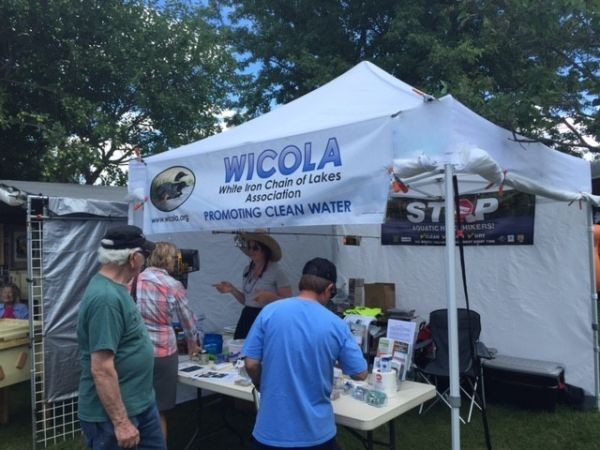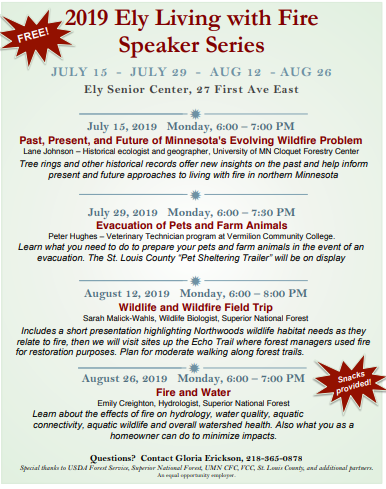Webinar: Starry stonewort invasion in Minnesota lakes (spread & impacts)
By The Aquatic Invasive Species Detectors Program @ University of Minnesota
Date and Time
Thu, October 17, 2019
12:00 PM – 1:00 PM CDT
Mark your calendars for Thursday, October 17th at noon to tune into a webinar from MAISRC graduate student Carli Wagner. Carli will be presenting her graduate research on one of Minnesota' newest -- and least understood -- aquatic invasive species, starry stonewort. This was one of the most popular talks at the 2019 Aquatic Invasive Species Research and Management Showcase, so if you missed out, now's your opportunity to hear directly from Carli.
The webinar is free but registration is required.
Talk details
The invasive alga starry stonewort (Nitellopsis obtusa) has become an increasing problem in Minnesota lakes since it was first identified here in 2015. In several lakes, starry stonewort is widely established and can grow abundant and dense. This growth certainly has recreational impacts, but the ecological effects of starry stonewort in Minnesota lakes are unknown. Potential impacts to native aquatic plants are of particular concern since they are an integral part of lake ecosystems. Carli examined the impacts of starry stonewort on native aquatic plants and tracked its invasion over multiple years to assess how it spreads and changes habitat. She found that starry stonewort negatively affected multiple aspects of native aquatic plant communities -- from individual species to functional groups to overall diversity and abundance. Starry stonewort can quickly expand and alter plant communities as a result. These findings fill knowledge gaps related to the impacts of starry stonewort in Minnesota lakes and can be used to guide response efforts.
More information
In the meantime, brush up on this research project on The University of Minnesota website.
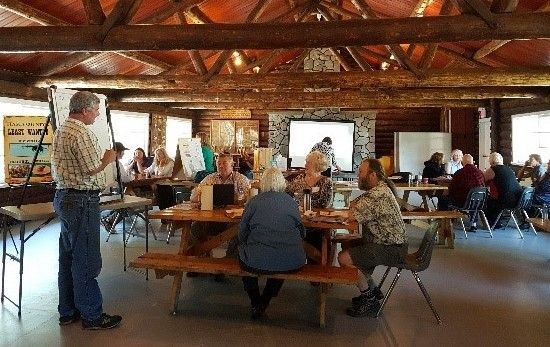 Get involved with organizations who are focused on watershed stewardship – your local lake association, like the Lake of the Woods District Stewardship Association, or Lake of the Woods Water Sustainability Foundation, a local Soil and Water Conservation District (in Minnesota), or environmental committees affiliated with your local municipality or county are just a few examples. The 2018 and 2019 Binational Lake Association Network Events were attended by members of the WICOLA Board.
Get involved with organizations who are focused on watershed stewardship – your local lake association, like the Lake of the Woods District Stewardship Association, or Lake of the Woods Water Sustainability Foundation, a local Soil and Water Conservation District (in Minnesota), or environmental committees affiliated with your local municipality or county are just a few examples. The 2018 and 2019 Binational Lake Association Network Events were attended by members of the WICOLA Board.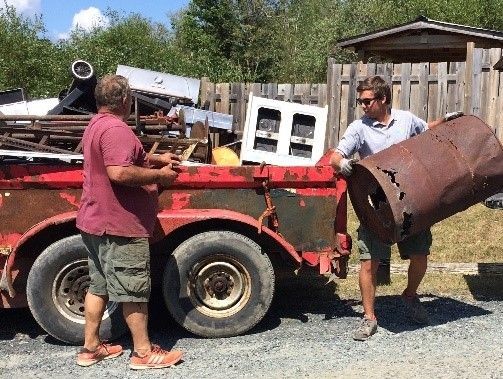 Why not grab your neighbours and all the kids and walk around the block to collect garbage? What a great way to educate your children that throwing trash out in the environment is not a good choice and that, together, good work can get done fast.
Why not grab your neighbours and all the kids and walk around the block to collect garbage? What a great way to educate your children that throwing trash out in the environment is not a good choice and that, together, good work can get done fast.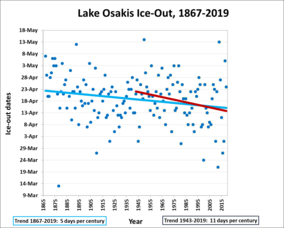 Minnesota is experiencing changes. It's getting warmer and wetter, which has shortened lake ice season. For example, Lake Osakis - an average-sized lake in central Minnesota - experiences ice-out more than a week earlier now than it did in the 1940's (see graph to the left).
Minnesota is experiencing changes. It's getting warmer and wetter, which has shortened lake ice season. For example, Lake Osakis - an average-sized lake in central Minnesota - experiences ice-out more than a week earlier now than it did in the 1940's (see graph to the left).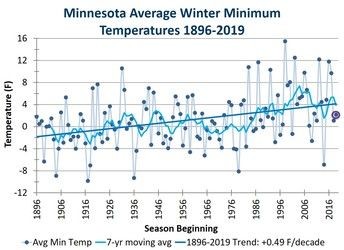 A shortened lake ice season has environmental and cultural effects for Minnesota:
A shortened lake ice season has environmental and cultural effects for Minnesota: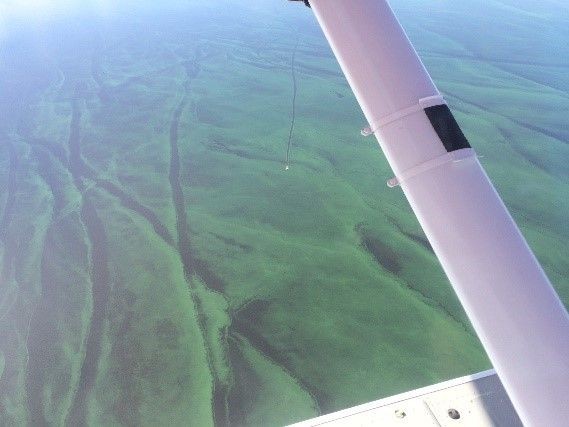
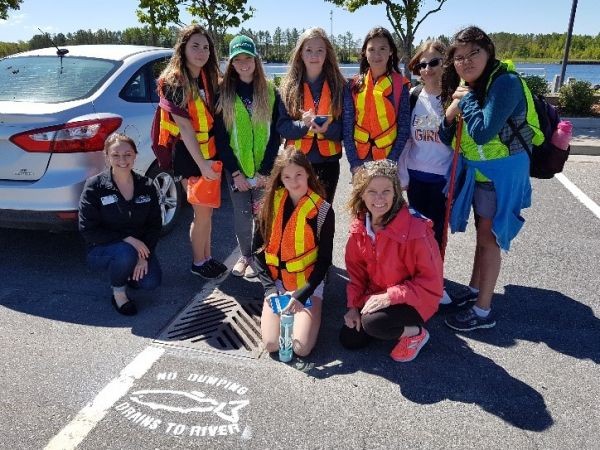 This past year, as a partnership with MPCA, Koochiching Soil and Water Conservation District and University of Minnesota, we are conducting one on one interviews to discuss values around water and the barriers and opportunities to being a good lake steward. With opinions coming in from Minnesota and Ontario, it will be interesting to compile the responses; the end goal is to be sure we are helping break down the barriers and understanding what motivates individuals to become involved.
This past year, as a partnership with MPCA, Koochiching Soil and Water Conservation District and University of Minnesota, we are conducting one on one interviews to discuss values around water and the barriers and opportunities to being a good lake steward. With opinions coming in from Minnesota and Ontario, it will be interesting to compile the responses; the end goal is to be sure we are helping break down the barriers and understanding what motivates individuals to become involved. 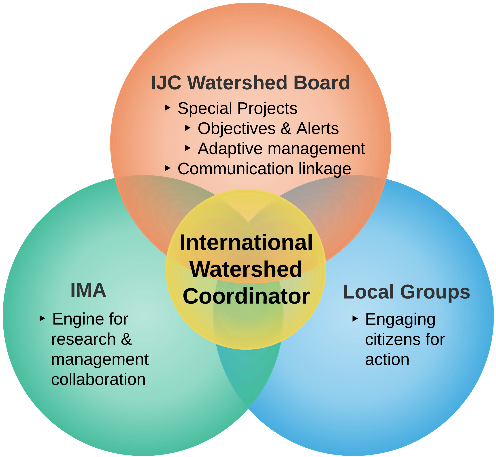 International – providing project management services on special projects for the IJC’s International Rainy-Lake of the Woods Watershed Board (IRLWWB), like developing an adaptive management approach to managing water levels, updating water quality objectives for the basin, building relationships with First Nation communities, Tribes and Métis;
International – providing project management services on special projects for the IJC’s International Rainy-Lake of the Woods Watershed Board (IRLWWB), like developing an adaptive management approach to managing water levels, updating water quality objectives for the basin, building relationships with First Nation communities, Tribes and Métis;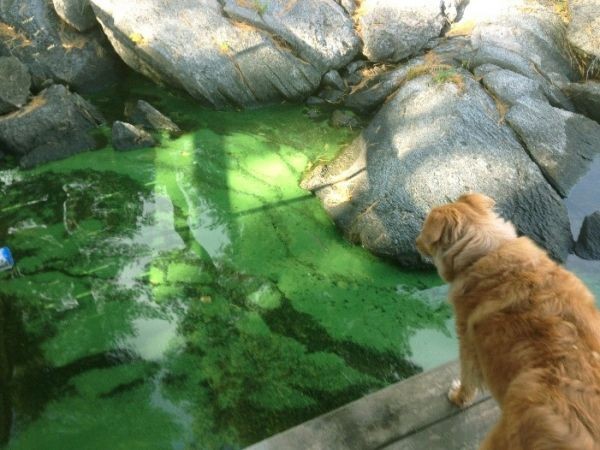 Toxins in algae are found in many Canadian freshwater lakes and elevated levels of toxins have been reported on Lake of the Woods in some summer months. Strange that we can even find blooms on smaller lakes that are only accessible by canoe and have no development, but we can. The culprit, in part, is climate change – not only are average water temperatures higher on Lake of the Woods, but it has become generally less windy, both of which may be playing a part in the algae problem. An analysis of ice-out records shows that the northern part of Lake of the Woods is having an average 28 more days of open water each year, giving another full month to grow algae annually.
Toxins in algae are found in many Canadian freshwater lakes and elevated levels of toxins have been reported on Lake of the Woods in some summer months. Strange that we can even find blooms on smaller lakes that are only accessible by canoe and have no development, but we can. The culprit, in part, is climate change – not only are average water temperatures higher on Lake of the Woods, but it has become generally less windy, both of which may be playing a part in the algae problem. An analysis of ice-out records shows that the northern part of Lake of the Woods is having an average 28 more days of open water each year, giving another full month to grow algae annually. 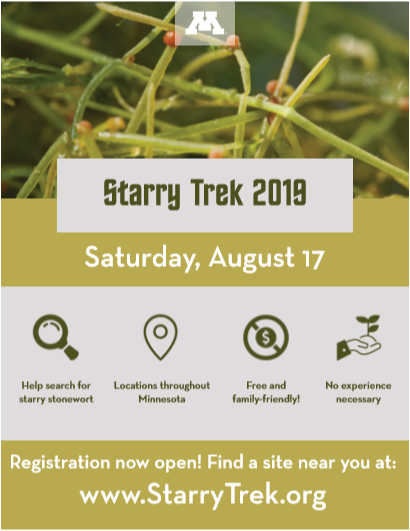
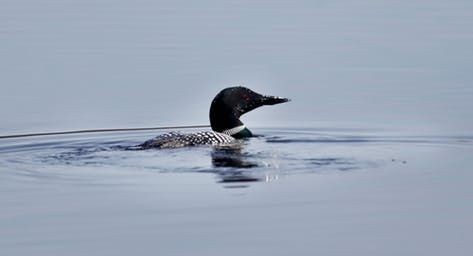 Arrowhead Lake in Britt, Minn., is home to the Laurentian Environmental Center, where plenty of nature lovers watch the comings and goings of the lake’s nesting pair of loons.
Arrowhead Lake in Britt, Minn., is home to the Laurentian Environmental Center, where plenty of nature lovers watch the comings and goings of the lake’s nesting pair of loons.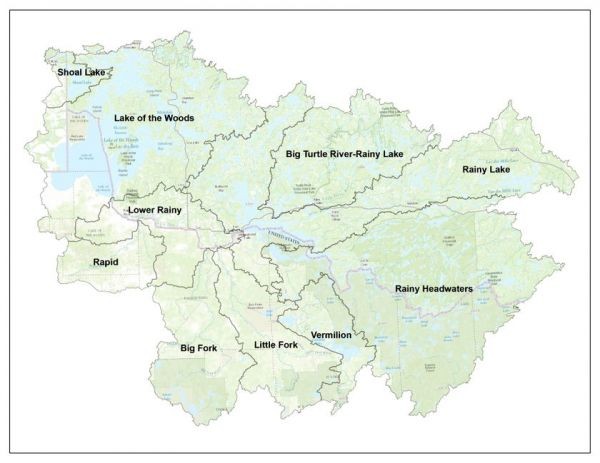 Everyone lives in a watershed and we live in what’s called the Rainy-Lake of the Woods Watershed, a massive basin, with its beginnings (called headwaters) only a short distance west of Lake Superior. A watershed is like a bathtub or catch basin, defined by high points and ridgelines that descend into lower elevations and stream valleys. A watershed carries water that is “shed” from the land after rain falls and snow melts. Drop by drop, water is channeled into the soils, groundwater, creeks and streams, making its way to larger rivers, lakes and eventually, the sea. Water interacts with all that it comes in contact with – the land it traverses and the soils through which it travels. Most importantly, what we do to the land and air affects water quality for all communities living downstream from us.
Everyone lives in a watershed and we live in what’s called the Rainy-Lake of the Woods Watershed, a massive basin, with its beginnings (called headwaters) only a short distance west of Lake Superior. A watershed is like a bathtub or catch basin, defined by high points and ridgelines that descend into lower elevations and stream valleys. A watershed carries water that is “shed” from the land after rain falls and snow melts. Drop by drop, water is channeled into the soils, groundwater, creeks and streams, making its way to larger rivers, lakes and eventually, the sea. Water interacts with all that it comes in contact with – the land it traverses and the soils through which it travels. Most importantly, what we do to the land and air affects water quality for all communities living downstream from us.